How to cover firewood? Firewood is a popular energy source in most households. Mostly, we use it for heating and cooking.
We are fully aware that this vital resource works best when fully dry. Therefore, you need to cover them to speed up the seasoning process and limit damage from rain.
But how do you cover your firewood to keep them in good condition? Well, there are several options to consider. For instance, you can use a tart or commercial cover.
If you’re wondering about How to cover firewood? We’re here for you. Read to learn more.
How to cover firewood outside?
Preparation
If you store your firewood outside, ensure the place is clean and dry. Storing firewood in a wet place may cause rot. Clean the storage place by removing undergrowth and leaves. Cover the pile with plastic or a tarp.
Finally, ensure the ground is level so the firewood doesn’t roll around. You can use gravel to level the ground.
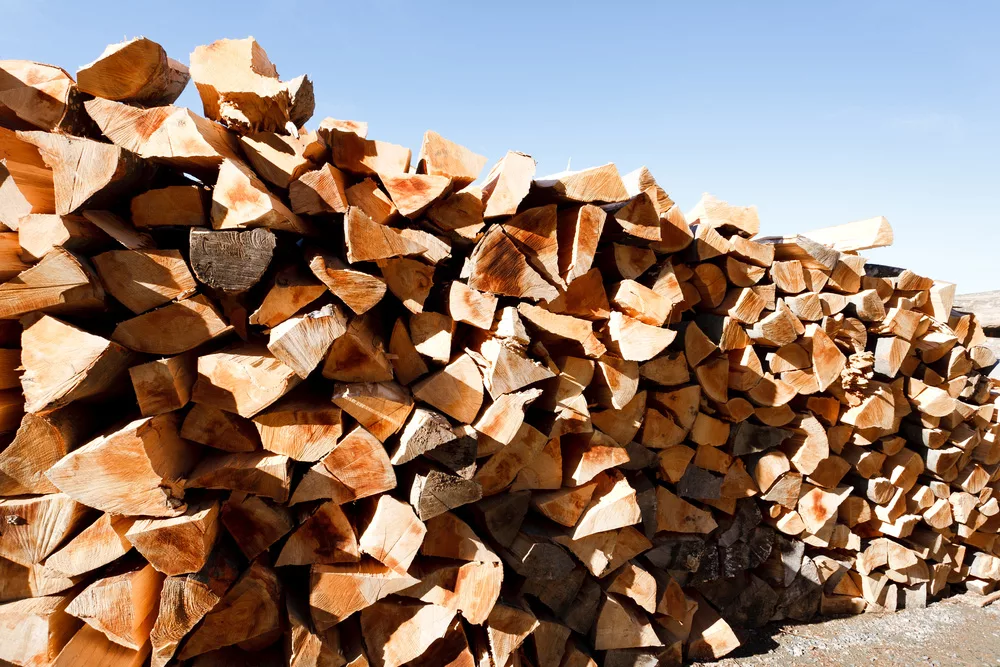
(A stack of firewood)
Location
Before deciding on the location, consider the expected weather. Keeping firewood inside is the most favorable but sometimes not feasible due to limited storage issues.
If you are keeping it outside, measure the area size to use the correct tarp size. When storing firewood outside, an outbuilding like a shed comes in handy.
Firewood sheds have doors and windows that allow the free circulation of air. Under this condition, humidity levels are low.
However, if you opt to store them indoors, use a cover. Covering might be necessary to avoid moisture damage, especially during winter.
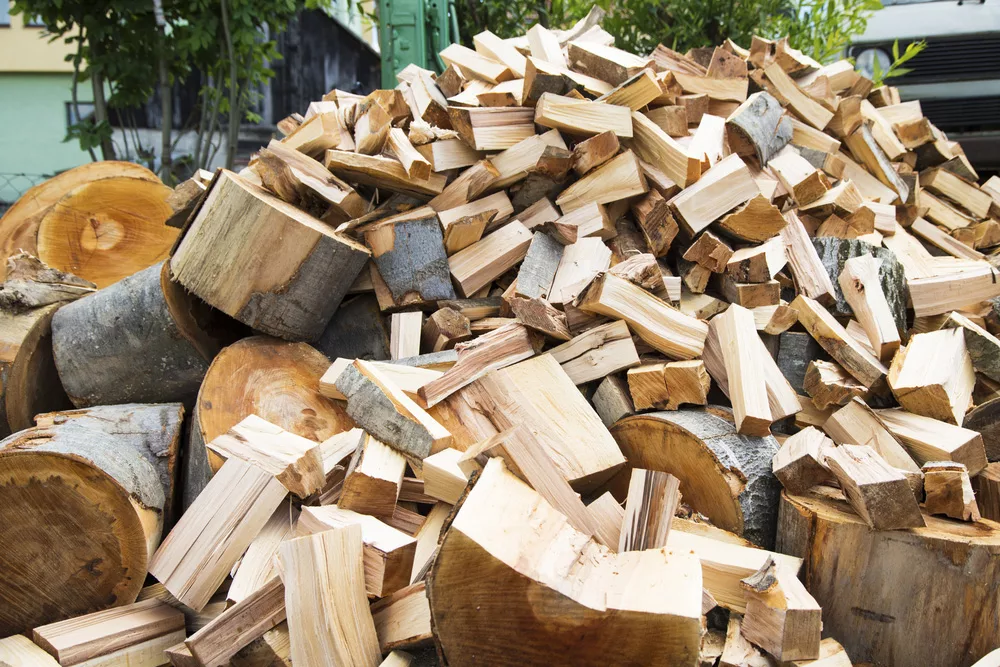
(A heap of firewood)
What to cover firewood with?
Before deciding on one, consider the type of wood and the expected weather. Here are four cover ideas with pros and cons:
Tarp
Tarps are the least expensive and the most accessible firewood covers.
Follow these steps to cover firewood with a tarp:
- Select the correct tarp. We recommend a heavy-duty, water and UV-resistant tarp.
- Measure the area to get the appropriate tarp measurements.
- Clean the area.
- Level the ground so that the wood doesn’t roll around.
- Arrange firewood in a neat stack.
- Cover the firewood with a tarp.
- Secure the tarp using a rope. Make sure the rope is tight.
- Constantly monitor your firewood to ensure it is dry, and the tarp isn’t damaged.
Pros
- It is cheap and easy to set up
- The firewood stays dry on all sides
Cons
- The logs will be exposed to the ground if not stacked on pallets
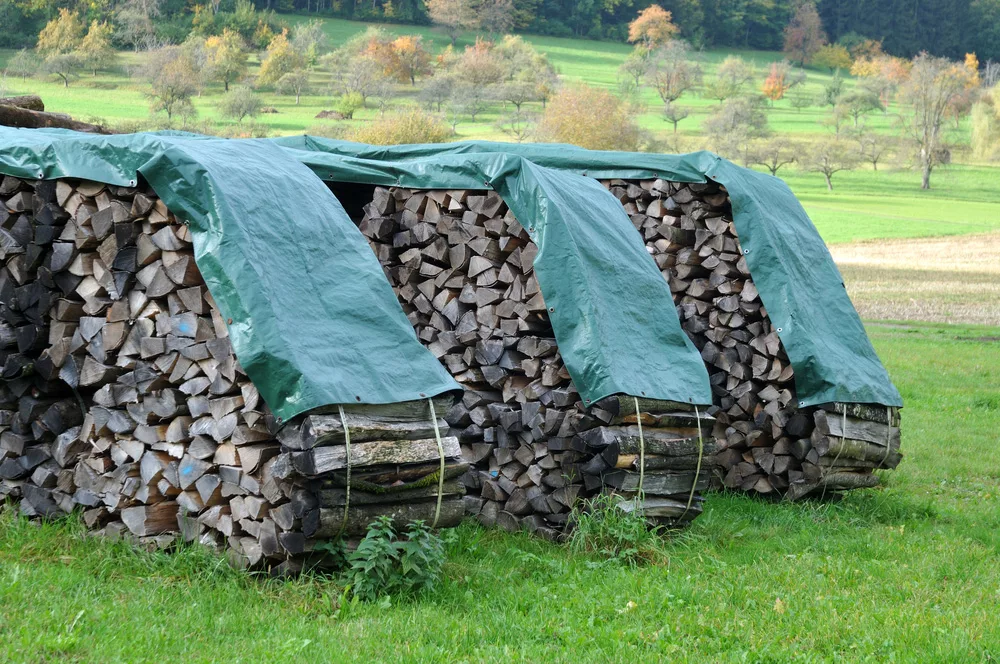
(firewood covered in a tarp)
Firewood cover frame
It is a metal or wooden frame with a tarp over it.
Pros
- You can build the frame with any material you prefer
- The cover is replaceable if damaged.
Cons
- The wind can easily lift and damage your tarp if not properly secured
- It offers poor protection to your firewood.
Firewood rack with roof
A carpenter will quickly build a firewood rack with a roof. The roof will protect your firewood from rain and snow, keeping them dry.
Pros
- It is simple to build, especially if you are into carpentry
- It protects from rain and snow
- The structure is up off the ground
Cons
- Firewood can get wet on the sides when it storms
- It can be expensive to set up due to the initial high cost of materials
- The firewood may become unstable if the standalone rack is not against the wall
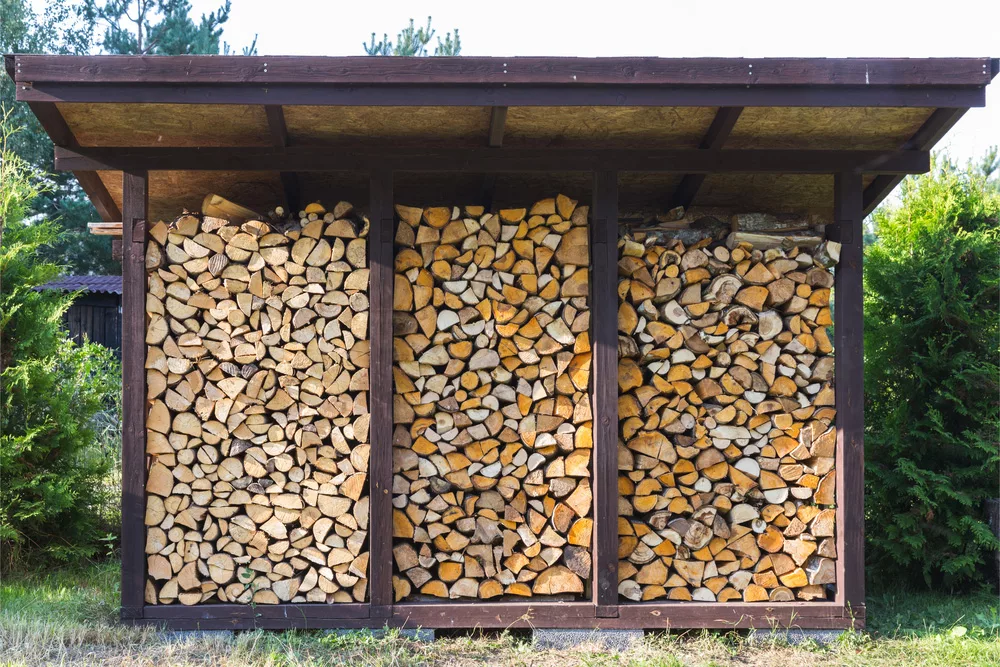
(A firewood rack)
Woodshed
Woodsheds are the best means to store your firewood. They usually come with a roof and walls.
Pros
- The most durable
- Offers complete protection
- You can DIY your woodshed to last longer and provide more protection.
Cons
- The most expensive option
- Requires space
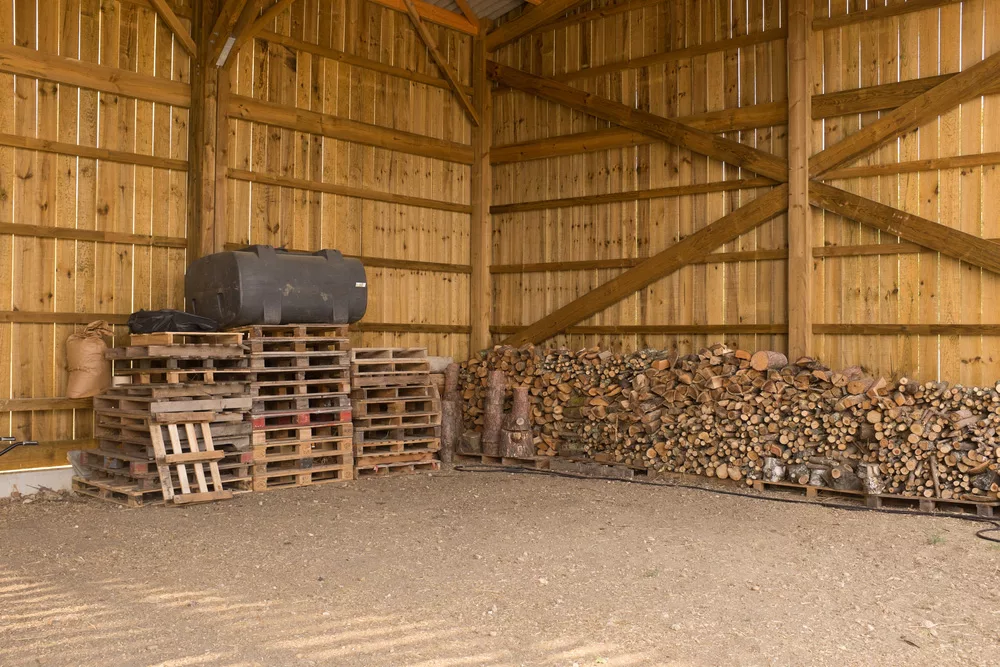
(A shed with firewood)
General tips on storing wood
Firewood can be dangerous if not stored in the right place. Keep your firewood at least 30 feet from your house. The distance would prevent a fire from jumping into your home if it were to occur.
Also, keep your firewood off the ground. It will help the logs dry quicker and reduce termite infestation.
Lastly, keep the sides of the firewood stacks free to allow open-air circulation. It will help in drying the wood.
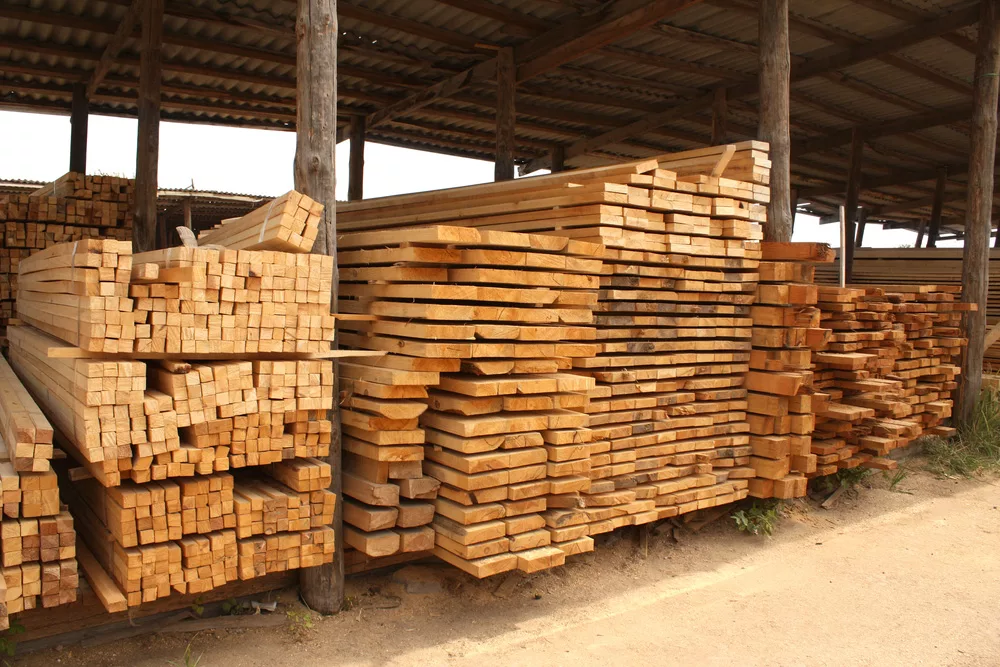
(The lumber in the warehouse)
Maintenance of a covered woodpile
Check your firewood stack every rain or snowfall. Uncover and give them time to dry if they are wet before covering them up again.
Use a heavy-duty tarp that is waterproof and UV resistant. Additionally, tie the tarps with a rope through each hole for extra security against the wind.
Furthermore, have a few tarps to spare if the current one is torn or damaged. Tarps (esp. plastics) tend to degrade with time.
If you opt for darker tarps, note that they absorb more heat, meaning your firewood dries faster. They also tend to last longer under UV exposure.
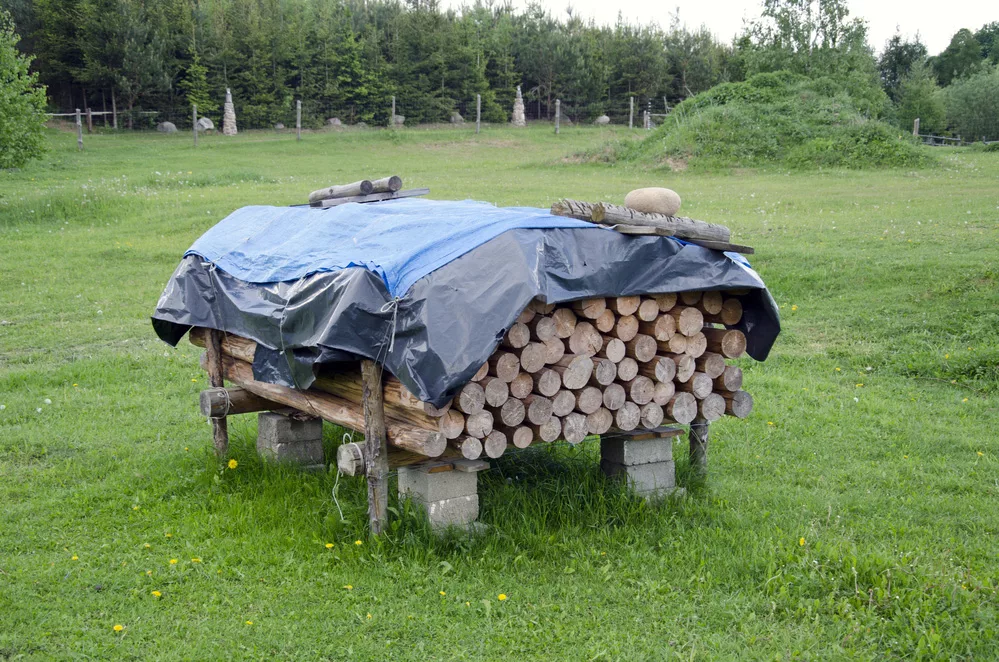
(dark tarp)
Frequently asked questions
Do I need to cover the ends of my firewood?
Yes! The easiest way is by installing metal banding or netting around the log with cable ties depending on the log’s size.
How long can I store my wood?
We recommend storing your wood for a maximum of 3 years before use. However, with proper storage, your firewood can last up to 10 years and remain in good condition. It’s best to burn your firewood immediately after cutting, so it doesn’t rot.
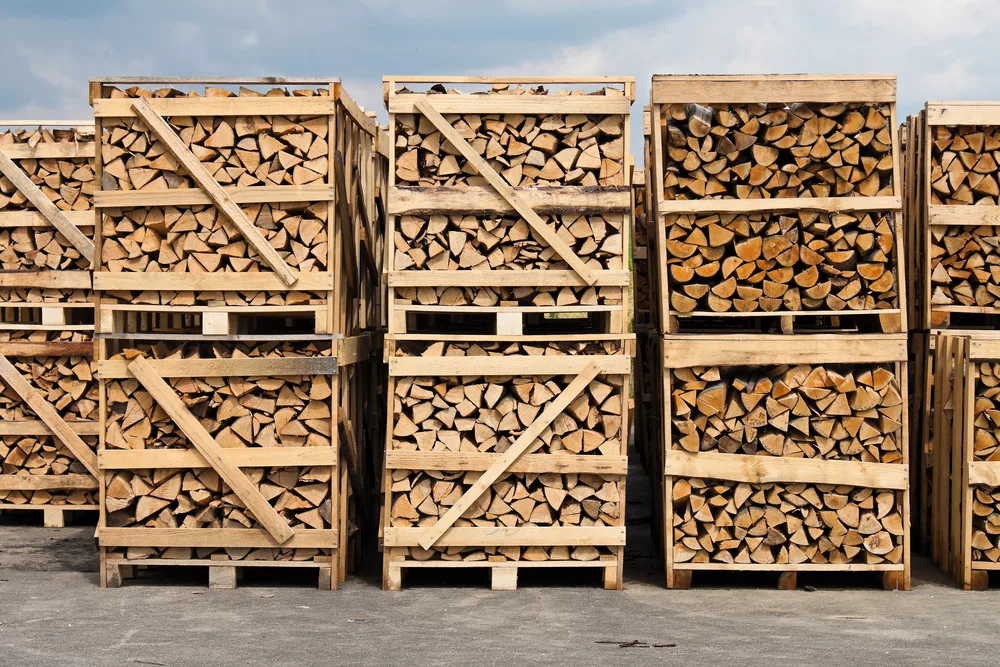
(A stack of wood)
Conclusion
Firewood is an energy source in most homesteads. The only way we can do justice to nature is to avoid wasting this resource. Therefore, we must cover it well to prevent damage. You can use tarps, firewood sheds, or firewood cover frames. Additionally, a carpenter can build you a rack with a roof.
Keeping your wood shape will guarantee you warmer winters.
